Don't miss out on a visit to Stralsund if you're in north-eastern Germany. This lovely little town is a real gem, and it's also full of Swedish history. We rolled here with the "Beach Basket Challenge", along with six other motorhomes.
Table of contents
Stralsund in northern Germany
Stralsund is a harbour town on the German Baltic Sea coast with around 60 000 inhabitants. It was founded in 1234, became a Hanseatic city in 1278 and has always been an important maritime city. Between 1648 and 1815 the town was owned by Sweden, so there are plenty of memories of the Swedish era here.
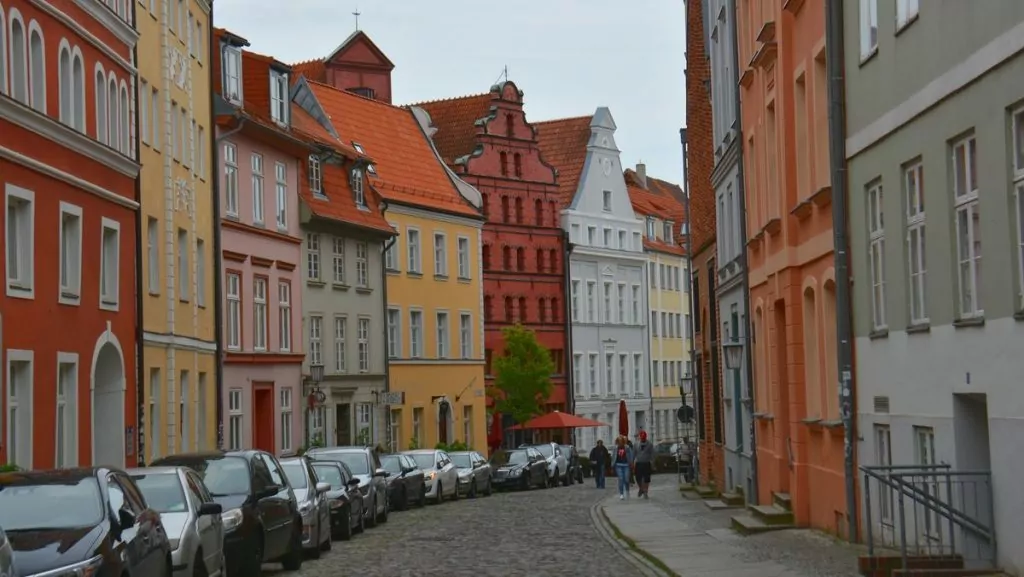
Our trip to Stralsund - with drama
The journey started by driving from Havelberge Camping and Holiday Park to Stralsund. On the map below you can see the entire day's journey, which then continued further out on Rügen. But even before we arrived in Stralsund, things got dramatic.
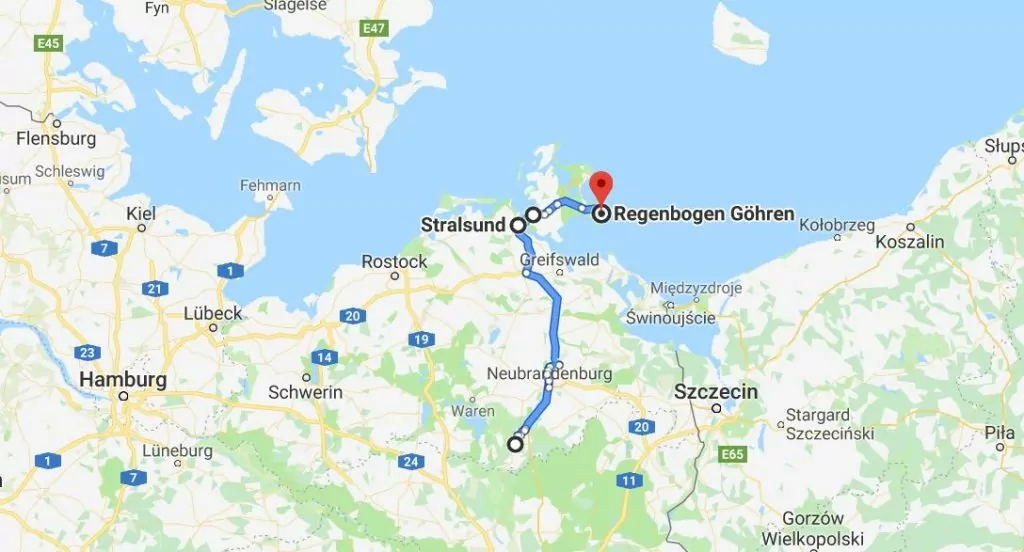
We were the last of the seven motorhomes and arrived at the accident site just as it was being closed. Two passenger cars were involved in an accident and one of them had also hit one of the group's motorhomes from behind, damaging one of the rear corners.
The damage was not so bad that the camper van could continue to drive, but it will of course need to be repaired and the couple were helped by the police with the practicalities. Both they and we were stuck at the accident site for a long time, and could not join the tour in Stralsund.
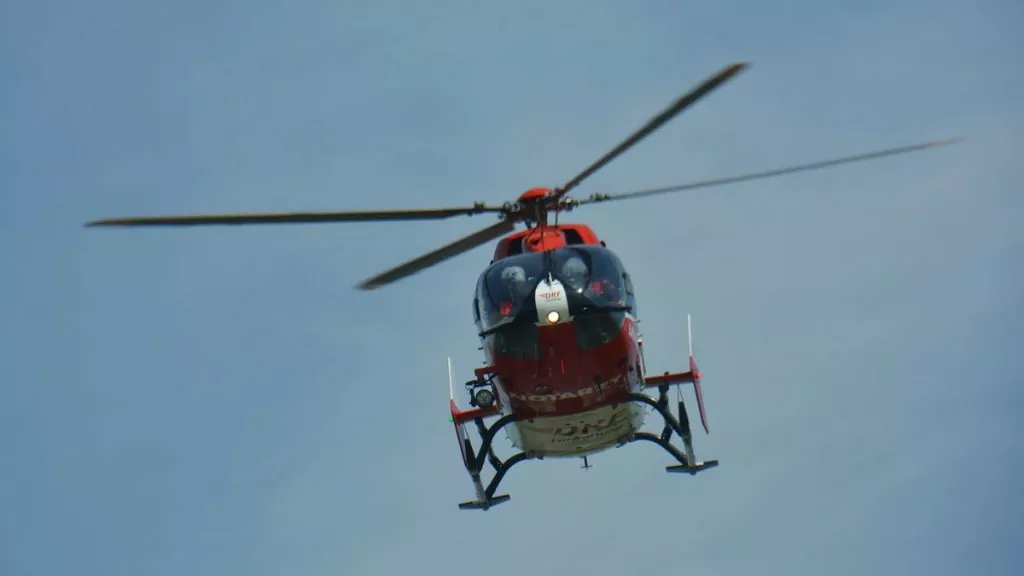
Lunch in Stralsund
Eventually we arrived in Stralsund, and headed into town to find our friends. Since we were late, we unfortunately missed the guided tour (which according to the others was really good) and we instead had to quickly walk through the city to the restaurant where we would have lunch.
We had lunch at the Zum Scheele restaurant in Stralsund. They serve different lunch dishes every day, and I had a great bacon-wrapped chicken fillet. Perfect ending with coffee and rhubarb cake!
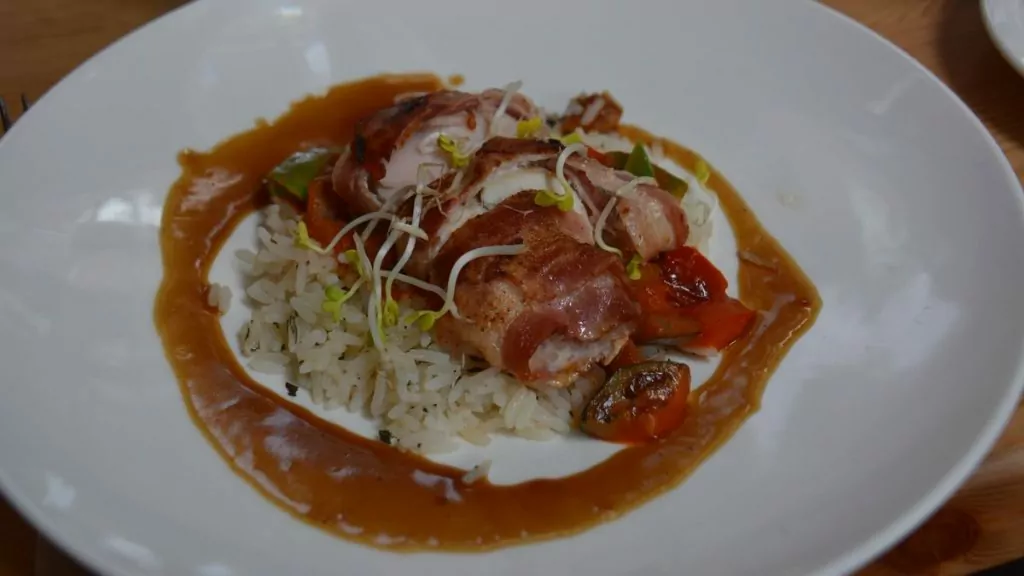
A Unesco World Heritage Site
After lunch we had the opportunity to look around the city for a while, with all the historic buildings. The old town of Stralsund, together with Wismar, was added to the UNESCO World Heritage List in 2002.
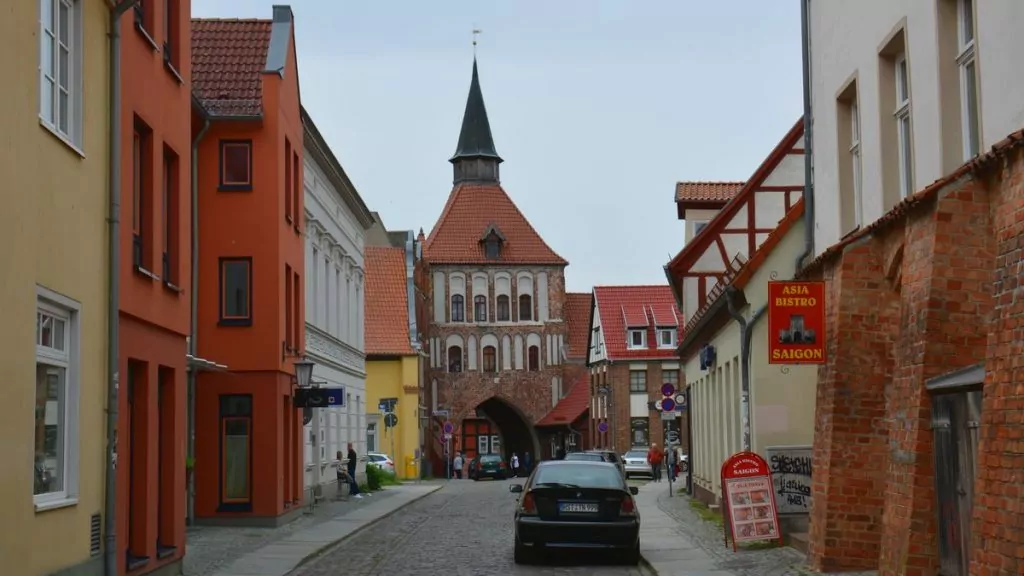
Town hall in Stralsund
In this old city centre you can find around 570 medieval houses. The medieval buildings are located around the Alter Markt square, where you can see the characteristic town hall. The Town Hall in the Old Town originally dates from the 13th century and is named after the Swedish officer and architect Nils Eosander, who lived in the 17th century.
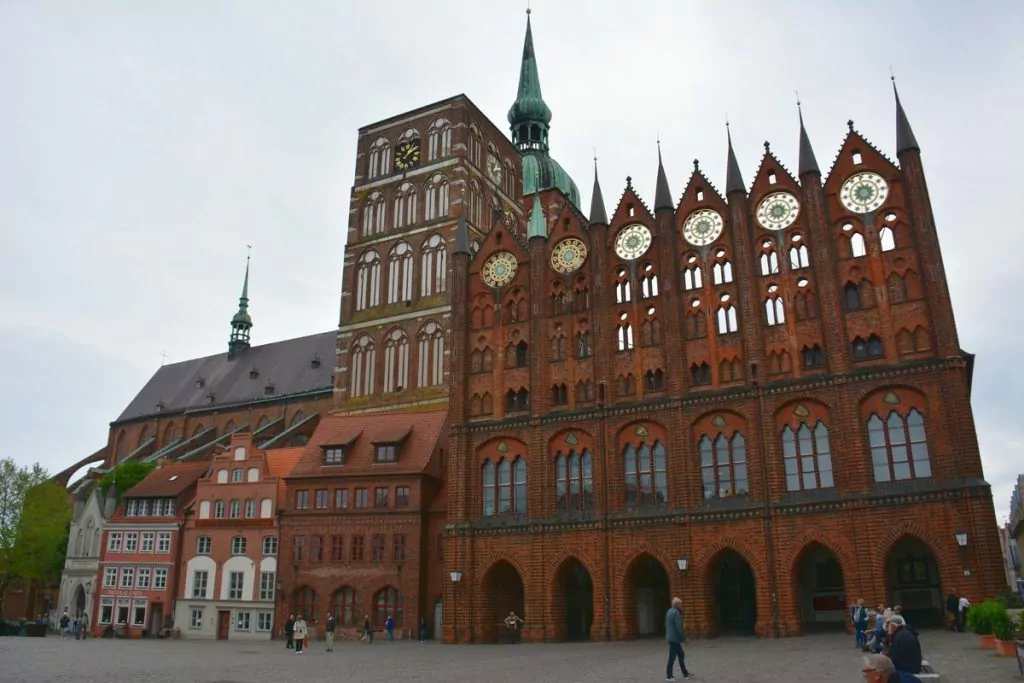
St Mary's Church in Stralsund
Stralsund has three medieval churches and the Lutheran Church of St Mary from 1298 stands majestically and can be seen from afar. The 100 metre long church with an interior height of over 32 metres is incredibly powerful. In 1647, St Mary's was the tallest building in the world at 151 metres, but was struck by lightning and the tower burned.
In St Mary's Church there is a funeral monument to the Swedish Count Johan Paulinus Lillienstedt, which is considered to be Pomerania's finest Baroque creation. The monument was made by the Dutch sculptor Johann Baptist Xavery.
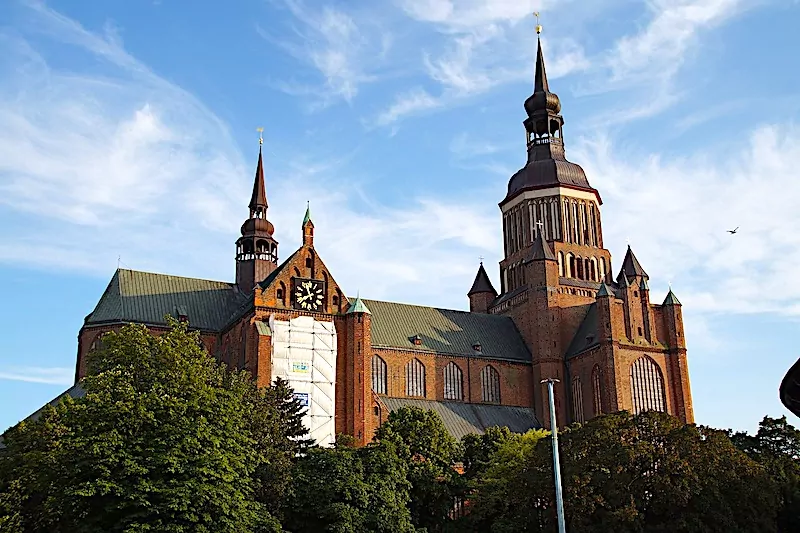
St Nicholas Church
Dating from the 1276s, this beautiful church was not completed because one of the two towers has no top. The church is dedicated to the patron saint of sailors, St Nikolai.
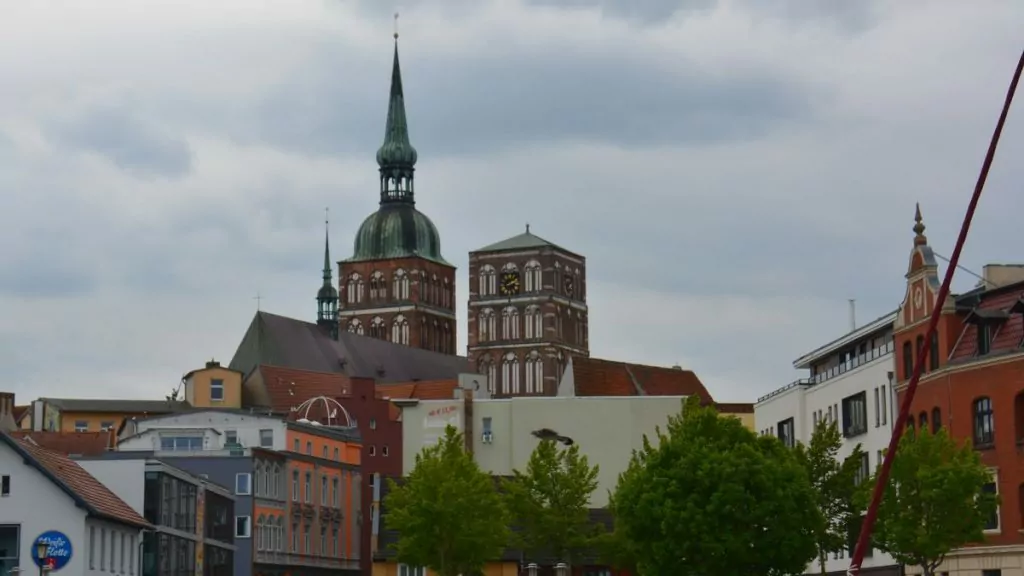
St James' Church in Stralsund
The St Jakobi church dates from c.1303 but was completed with the gigantic organ in 1327. As money was lacking and the church was to be extended, there are records of donations of 30,000 bricks from 1347 and 180 oak trees 15-20 metres long for the gables.
In 1662 the top of the church was struck by lightning and the fire destroyed the bells and tower, resulting in the flat top of today's church. In the middle of the 17th century, Stralsund was besieged and the church received 30 cannonballs, and during the Nordic War the church received about 40 hits.
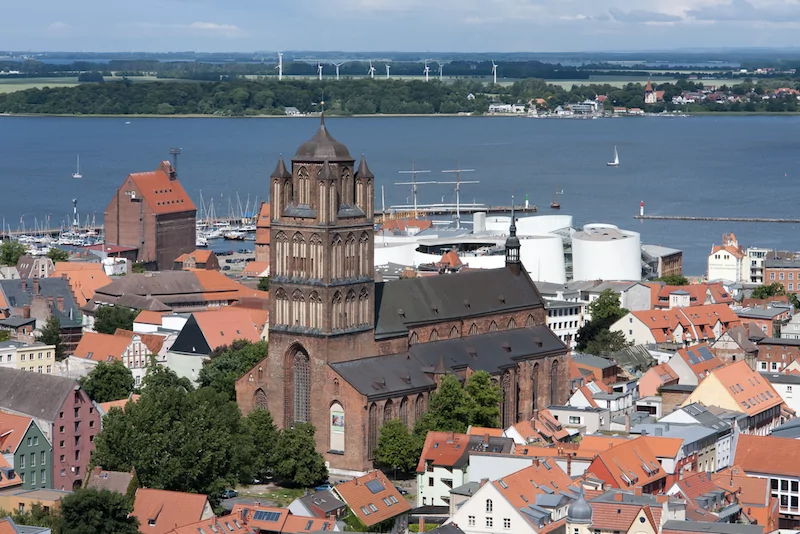
Germany's oldest pub Zum Fahre
During the walk back from the restaurant we got a little mini-guided tour. The guide pointed out the yellow house in the photo below, which is probably Germany's oldest pub, and also one of the oldest pubs in Europe. The pub Zum Fahre opened in 1332, and according to the guide is still a nice place to drink a beer.
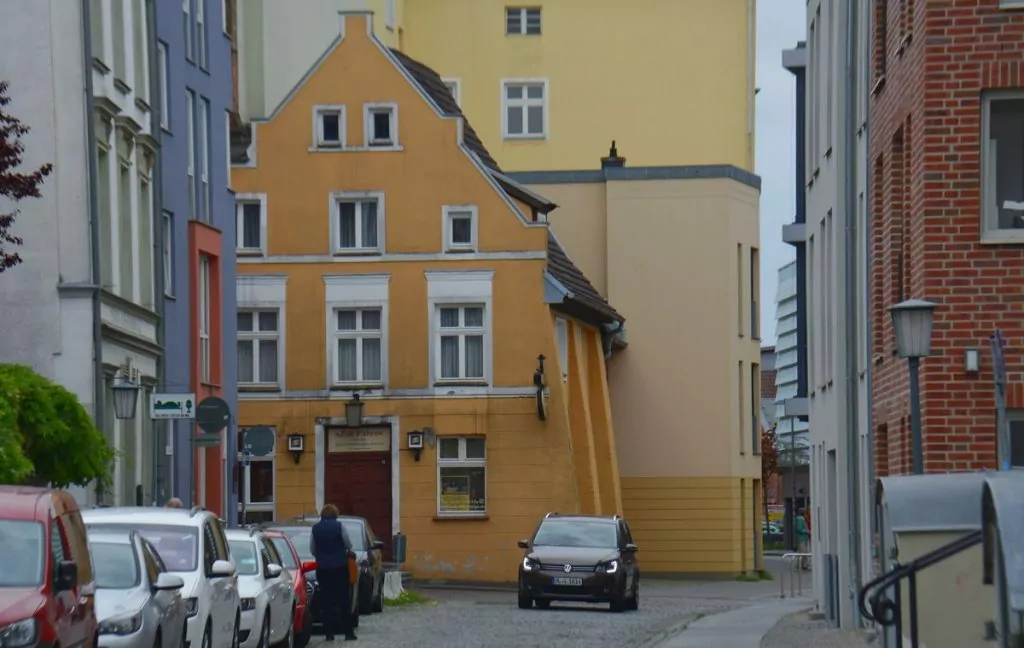
Olof Palm Square
We also had the chance to peek into the open ground floor of an older private house. There was plenty of history in the walls! We also found a sign from Olof-Palme-Platz, located in Stralsund.
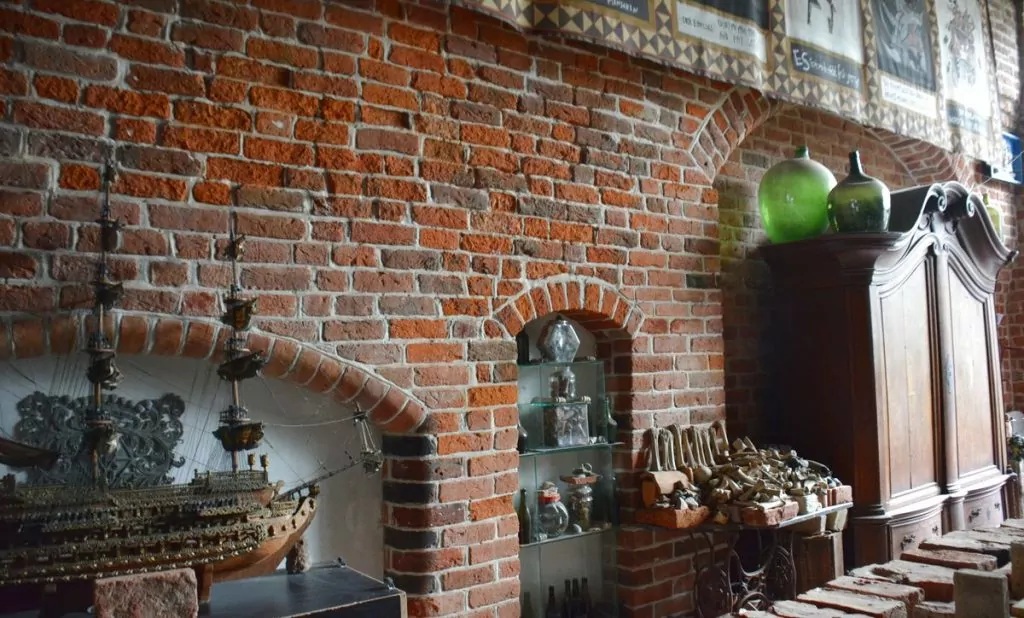
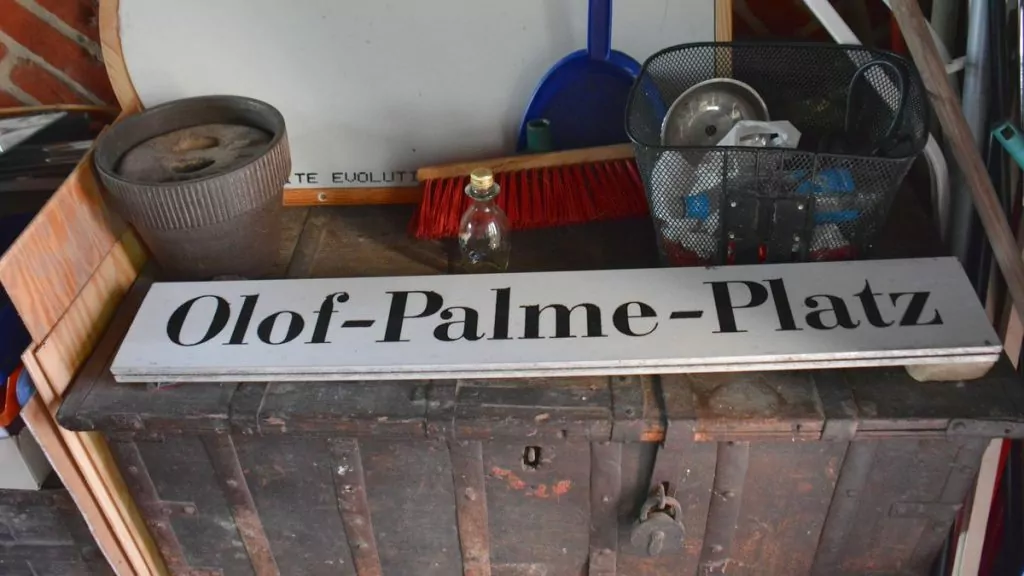
Gorch Fock I
We also had time to walk the promenade and discover the feeling of trade since almost 1000 years ago. There are wonderful remains such as the harbour office but also the old three-masted school ship Gorch Fock I from 1933.
The ship is also a floating museum and is named after the North German author Gorch Fock. The ship was sunk in 1945 during the Second World War and was salvaged in 1947 by the Soviet Navy in the former East Germany, where the ship was called 'Towarischtsch'. If you want to get married on a ship, you can do so on the Gorch Fock I.
More to see and do in Stralsund
Of course, we didn't get to see and do everything in Stralsund during our relatively short visit. Here are some more tips:
Ozeaneum Stralsund
Ozeaneum Stralsund provides an insight into different marine environments. There are 46 different aquariums including a pool with 2.6 million litres of water about life from the North Sea.
Hanseatic League of Stralsund
Hanseatic League of Stralsund is a water park with whirlpools, water slides and tropical environments.
Störtebecker Brewery
Brewery Störtebeker Braumanufaktur has a restaurant, shop and tastings. Stralsund has 24 breweries that have survived several hundred years since 1401. Then there were 170 breweries in Stralsund and the beer they serve is named after the notorious pirate Klaus Störtdecker, who was the Robin Hood of Germany.
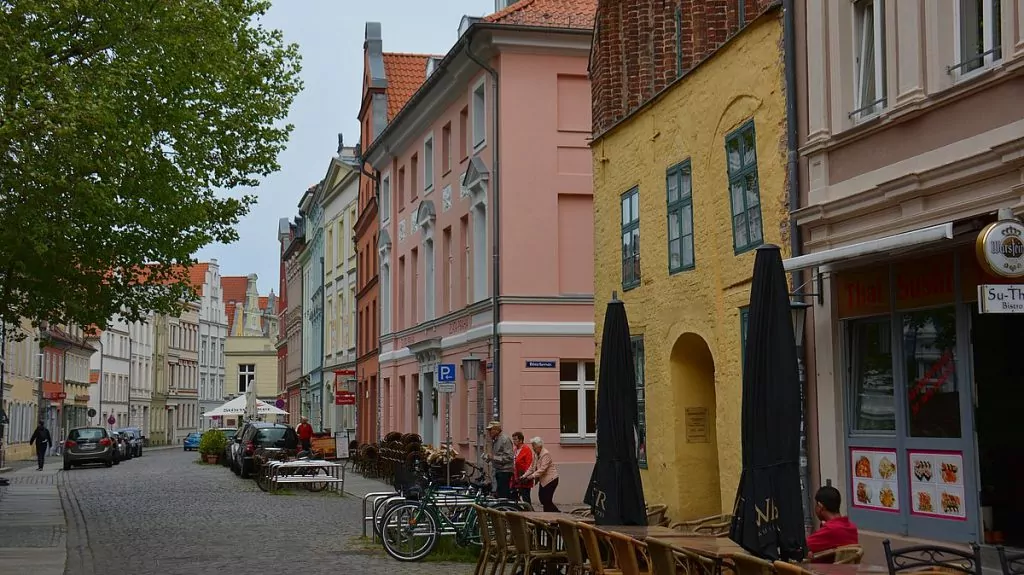
Onwards to Rügen
After the visit to Stralsund, we rolled on to Rügen, over the large Rügen bridge also known as "Rügendamm" over the Strelasund. The bridge was completed in the autumn of 1936, and in the past you went by ferry to Altefähr on Rügen. Here we would find our campsite for the night, and on the way we would first visit a local brewery.
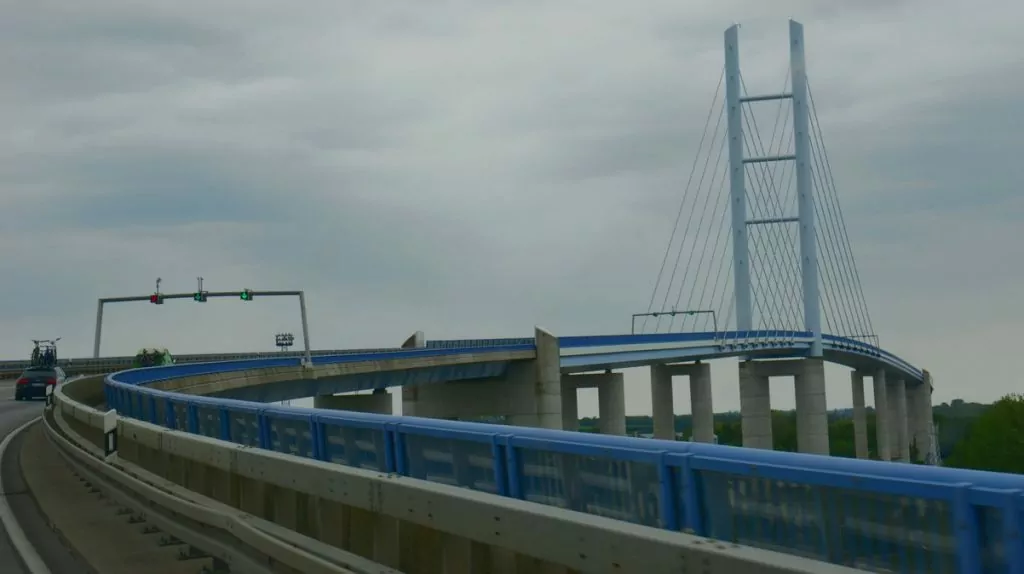
Beer tasting at Insel Braueri
The Insel Braueri brewery is located in Rambin on the island of Rügen. Here, several interesting beers are made in stylish bottles. In addition to several beers with alcohol, four non-alcoholic beers are made. We tried some of the beers and were, surprisingly, most fond of a really dark beer with a tone of chocolate in it. Even the non-alcoholic beer tasted good.
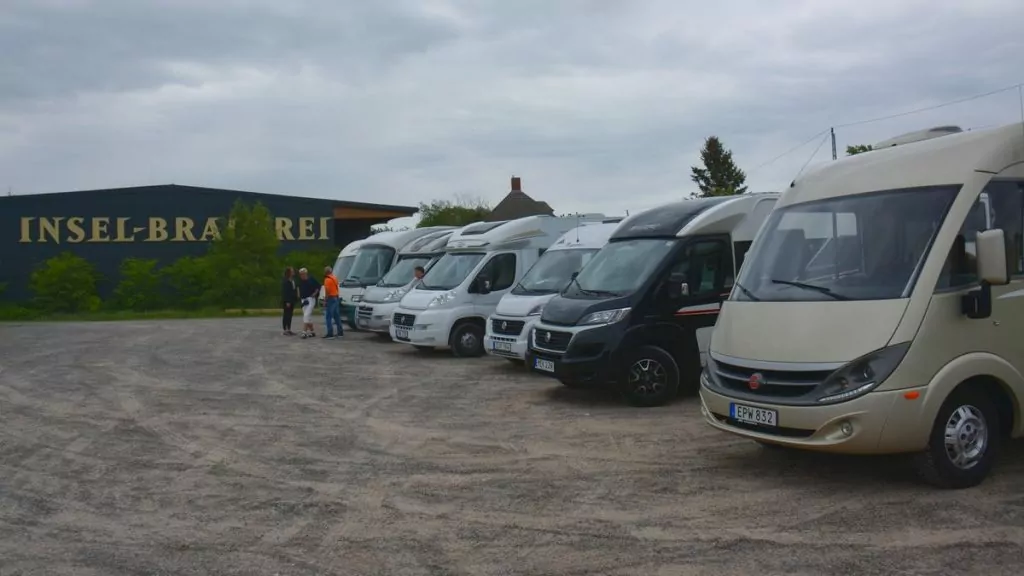
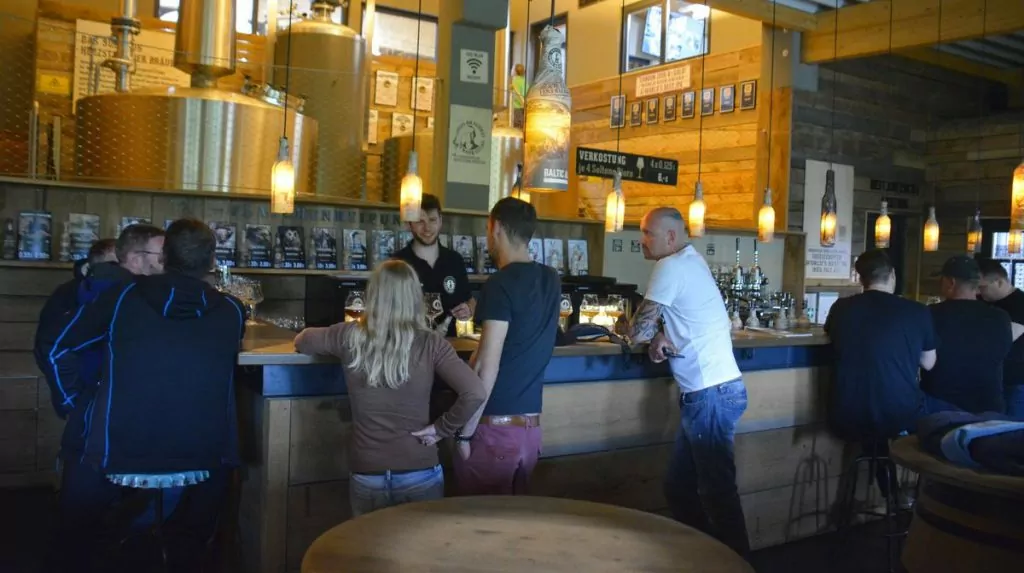
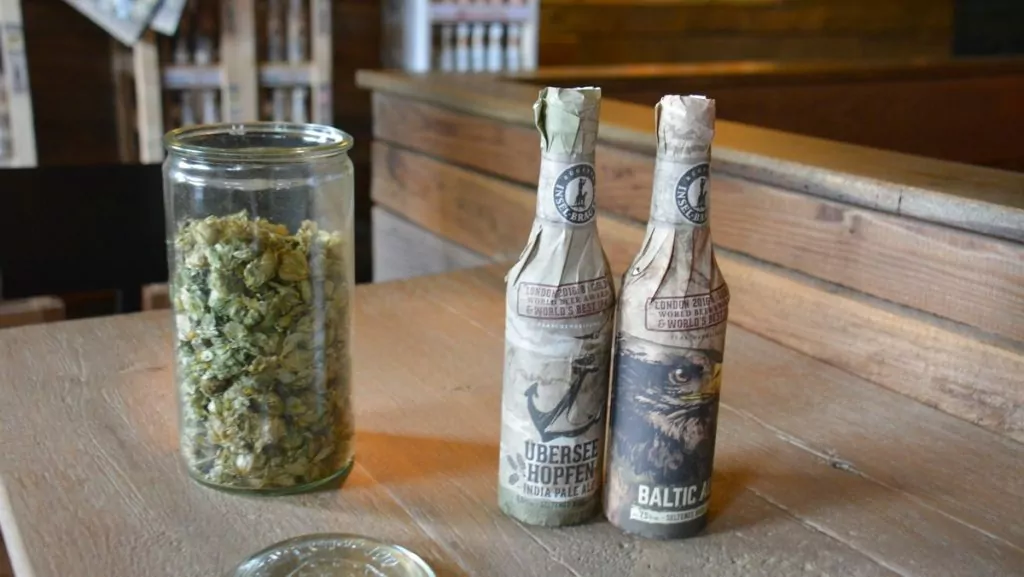
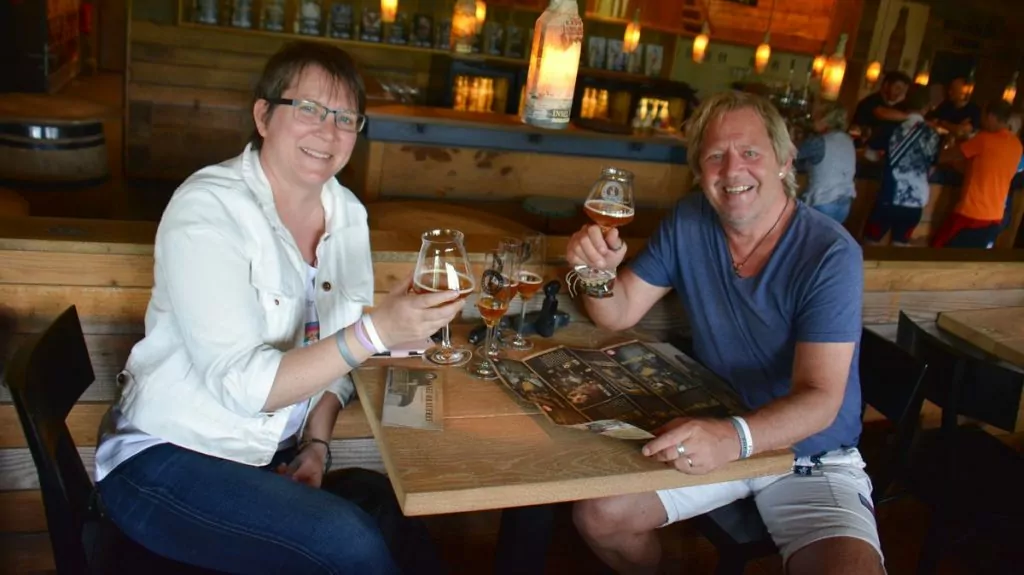
According to the programme we were supposed to have another challenge here, but due to some misunderstanding it was cancelled, which means there is only one challenge left on this trip. Tomorrow we will tell you how it went!
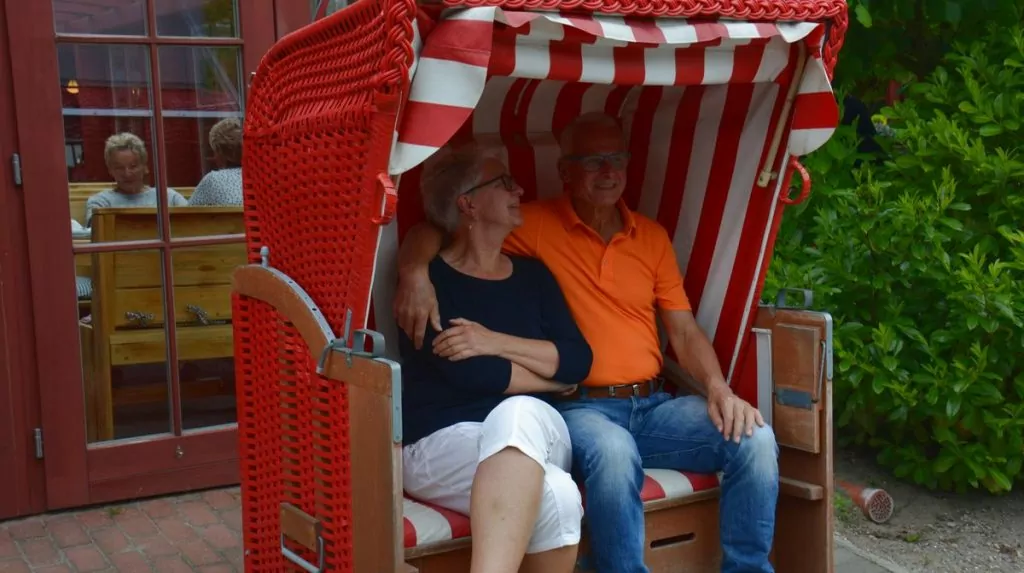
To camping on Rügen
After the visit to the brewery (yes, the drivers were of course allowed to drink non-alcoholic drinks or just taste some) we drove to Regenbogencamp in Göhren.
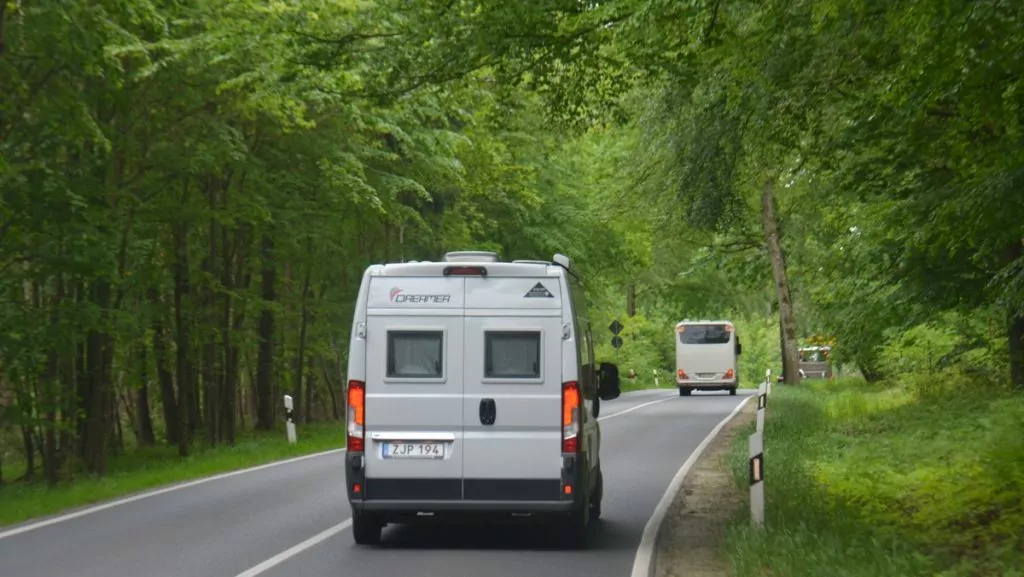
See more in Northern Germany
There is of course much more to see and experience in northern Germany. Here are some tips on interesting places to visit in the neighbourhood:
- Greifswald is a beautiful city with a lot of Swedish history
- Rügen is a lovely holiday island with white limestone cliffs.
- Usedom is a beautiful island on the border between Poland and Germany.
- Goods is a charming town on the great lake of Müritz.
Schwedenfest in Wismar, Germany
Every year on the penultimate weekend of August, the town of Wismar celebrates, with much fanfare, the...
Beautiful roads in Germany - themed holiday routes
There are more than 150 beautiful roads in Germany, each with its own theme and packed with...
Oktoberfest in Germany - and other German folk festivals
Who doesn't want to experience Oktoberfest in Germany? We've gathered everything you need to know to...
Things to do in Dresden - 18 sights and experiences
What to do in Dresden, Germany? This historic city offers magnificent sights in the centre of...
10 amazing natural areas in Germany
Today we dream of travelling to beautiful natural areas in Germany. One day we can travel again,...
By ferry to Germany - at the coast
Yesterday morning we left Trelleborg and Sweden and rolled aboard a ferry to Germany, more...
Sanspareil rock garden and Zwernitz castle in Bavaria
Sanspareil Stone Garden is a stunning 18th-century landscape garden, found just outside Bayreuth in Germany.
Beer in Germany - 6 German experiences with a beer theme
What is the best way to experience beer in Germany? Germany has a strong beer culture and it...
Castle Favorite in Rastatt - exclusive German summer palace
Castle Favorite in Rastatt is an exclusive 18th century summer palace in western Germany. Also...
Green Citadel in Magdeburg - playful and green living
The Green Citadel in Magdeburg is a residential building, but also a spectacular and amazing sight. This house...
The Roman Empire in Germany - 6 sites from the Roman period
The Roman Empire in Germany? Yes, indeed! Ancient Rome was a powerful empire that originated in Rome, but...
From Kiel to Gothenburg - best ferry between Sweden and Germany
Then it was time to take the ferry from Kiel to Gothenburg, after two months of motorhome travelling in...
4 German themed roads we dream of
German theme roads offer ready-made routes through picturesque landscapes, often with sights lined up in a row. Wine route,...
Things to do in Bamberg - 14 tips for a lovely German town
What to see and do in Bamberg, Germany? This fine and delightful German city, whose...
Potsdam in Germany - and Sanssouci Castle
Potsdam in Germany and Sanssouci Palace offered a positive surprise. In Potsdam there are buildings with...
Germany's longest suspension bridge - Titan RT in the Harz Mountains
Germany's longest suspension bridge, the Titan RT, spans the Rappbode valley and dam in the Harz Mountains. From...
Wörlitzer Park in Germany - Dessau-Wörlitz Garden Kingdom
Wörlitzer Park is part of the Dessau-Wörlitz Garden Kingdom, which has been designated a UNESCO World Heritage Site due to...
Schwerin Castle - fairytale castle in northern Germany
Schwerin Castle is a beautiful fairytale castle with battlements and towers, located in northern Germany....
Bad Segeberg - Karl May Spiele and bat cave
Bad Segeberg inland, where we travelled to visit the "Karl May Spiele" ...
Greifswald in Germany - attractions and Swedish history
Greifswald in Germany is a charming and beautiful city, full of attractions and Swedish history. We...
Things to do in Magdeburg - 12 tips for the Ottostadt in Germany
What to do in Magdeburg, Germany? This city, sometimes referred to as the 'Ottostadt', has a...
Ostsee camping in northern Germany - and party with the gang
We have, together with eleven other motorhomes, spent three nights at the Ostsee camping in Zierow outside...
Thale in the Harz - among witches and devil walls
Thale in the German Harz Mountains - you come here to experience dramatic scenery, mixed with...
North Sea coast in Germany - Husum and Sankt Peter-Ording
Our last stops during this summer's long motorhome trip were Husum and Sankt Peter-Ording on the North Sea coast of Germany....
Rammelsberg Mine - a Unesco World Heritage Site in Goslar
The Rammelsberg mine is a Unesco World Heritage Site in the German town of Goslar, located in the mountainous area of...
Saxon Switzerland - day trip from the Czech Republic to Germany
Saxon Switzerland is a mountainous area and national park in Germany with stunning and dramatic scenery. The natural area...
Kröslin marina in Germany - the farewell party of the sailing trip
Finally, it was time to sail into Kröslin marina, or Kröslin Baltic Sea Resort...
Burg Hohenzollern in Germany - on top of a mountain
Hohenzollern Castle in Germany is located high up on a mountain, and you have to go through...
The boat lift in Niederfinow - with a lifting height of 36 metres
The boat lift in Niederfinow in the German Oder-Havel Canal is a fascinating piece of lifting equipment, which lifts boats as much as 36...
Regenstein Castle in Blankenburg - and sandstone caves
Regenstein Castle in Blankenburg is a historic ruined castle in the German Harz region. Here you can...
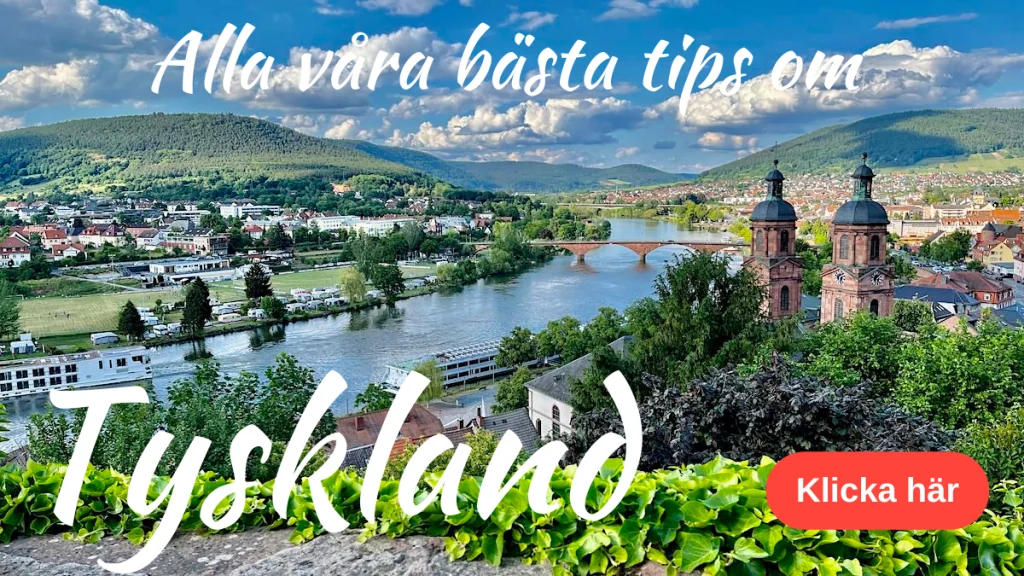
Facts about Stralsund
- Country: Germany
- Federal Republic of Germany: Mecklenburg-Western Pomerania
- Circle: County of Vorpommern-Rügen
- Population: 57 000 (2011)
- Name: Stralsund, but in the 17th century known as Strålsund in Swedish.
- Location: Northeastern Germany, close to the metropolitan areas of Hamburg, Berlin, the Öresund region, Stettin and Rostock. Also nearby is the holiday island of Rügen and the university town of Greifswald.
- Industries: Shipyard (Volkswerft Stralsund), German naval technical school, brewery (Störtebeker), labour market insurance and tourism.
Things to see and do in Stralsund
- Unesco heritage: The old city centre has been a UNESCO World Heritage Site since 2002.
- Churches: There are three medieval churches in the city: St Nicholas' Church (1276), St Mary's Church (1298) and St James' Church (1303).
- Attractions: The town hall from the 13th century, St Catherine's Monastery from 1250, the former St John's Monastery (now the city archives) and the Swedish Commander's House.
- Museums: The German Maritime Museum (Deutsches Meeresmuseum), including the Ozeaneum Stralsund and the Kulturhistorisches Museum, which has several branches.
Early history of Stralsund
- Founding: Stralsund was founded in 1234 by Wizlaw I, Prince of Rügen.
- 14th century: The city was cornered several times, but was still the second most important city in the Hanseatic League (after Lübeck).
Association with Sweden
- Association with Gustaf II Adolf: On 24 June 1628, the city signed an alliance with King Gustav II Adolf of Sweden. Among other things, Sweden provided 600 troops to defend the city against imperial troops under Albrecht von Wallenstein.
- Victory 24 July: The besieging army was forced to surrender on 24 July, and the victory has been celebrated every year since.
Swedish time: 16th century
- The Peace of Westphalia: With the Peace of Westphalia in 1648, Stralsund became Swedish property.
- Under attack in 1678: In 1678 the city was attacked by Frederick William I of Brandenburg and forced to surrender. With the peace of 1679, Stralsund became Swedish again.
Swedish period: 18th century
- The Great Northern War: During the Great Northern War, Stralsund was besieged by the Allies (Prussians, Saxons and Danes). On 2 November 1715, the enemy opened fire, much of the city was destroyed and Charles XII was forced to surrender.
- Back to the Swedes: After the peace treaty of 1720, the city was returned to Sweden.
- The Seven Years' War: The city was blockaded in the winters of 1757-1758 and 1758-1759.
Swedish time: 19th century
- The Pomeranian War: Stralsund was surrounded and besieged by the French in 1807.
- The Peace of Paris: Sweden regained Stralsund in 1810 through the Peace of Paris.
- Transfer of Pomerania: In 1814 Stralsund and the rest of Pomerania were ceded to Denmark, which in 1815 handed them over to Prussia.
First and second world wars
- The First World War: The city was characterised by unrest after the First World War until a bourgeois city government was formed in 1919, which was dissolved in 1933 by the National Socialists.
- The Second World War: On 1 May 1945, Stralsund was captured by the Red Army. The town now became part of the Soviet occupation zone in Germany and later the GDR.
The modern history of Stralsund
- The reunification of Germany: After Germany's reunification in 1990, Stralsund became a 'model city' for urban planning in the new federal states. The historic city centre was renovated.
- Unesco World Heritage Site: In 2002, the city centre of Stralsund, together with Wismar, was designated a UNESCO World Heritage Site, in the form of uniquely preserved Hanseatic towns.
Accommodation in Stralsund
- Hotel: There are plenty of different types of hotels to choose from. Look at Booking.com, for example.
- Parking space for motorhomes: Caravan site at the Rügenbrücke, Werftstrasse 9a in Germany.
Travelling to Stralsund
- Ferry Trelleborg-Rostock: With Stena Line. Car from Rostock takes about 1 hour and 15 minutes (111 km).
- Trelleborg-Sassnitz ferry: By Stena Line. Car from Sassnitz takes about 50 minutes (50 km).


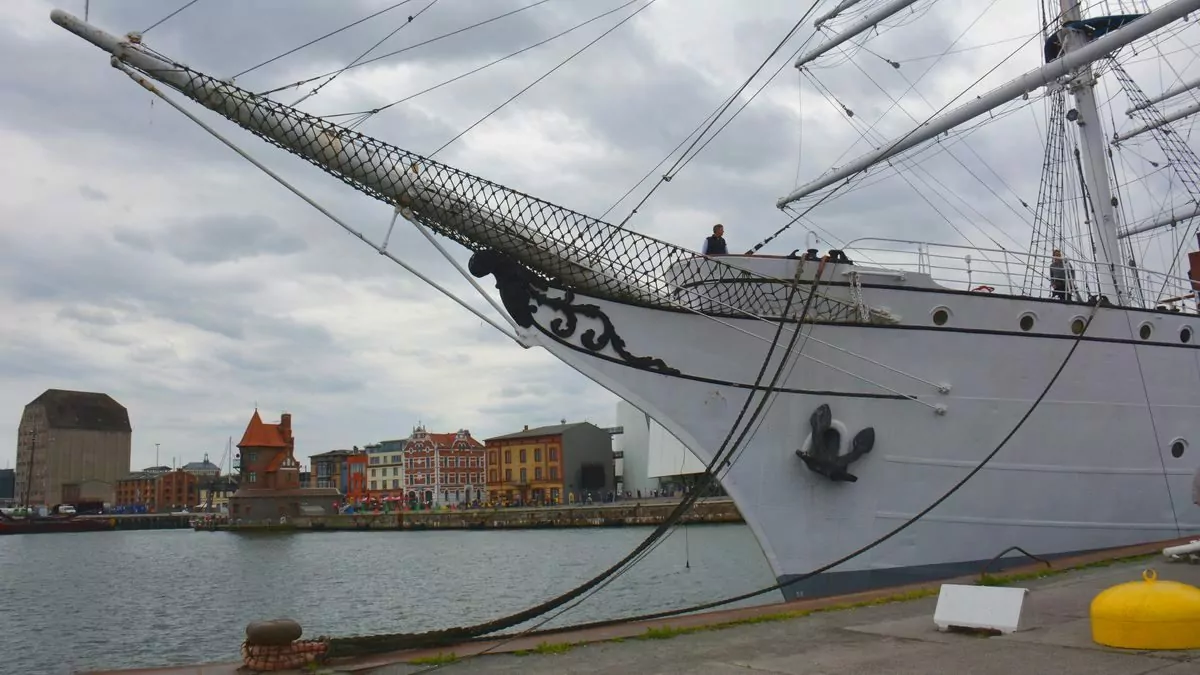






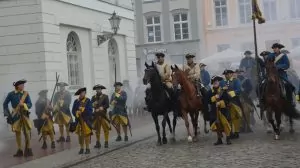
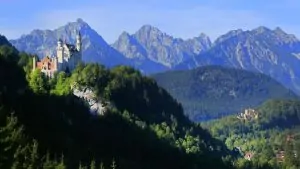
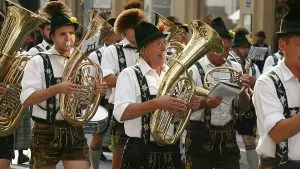
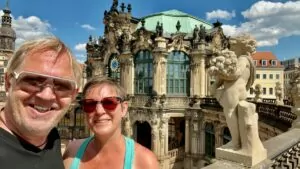
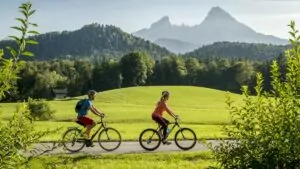
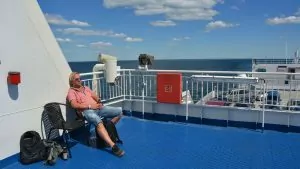
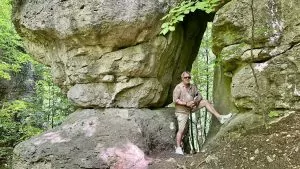
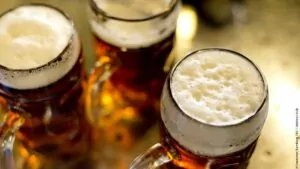
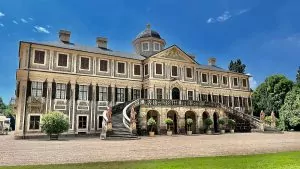
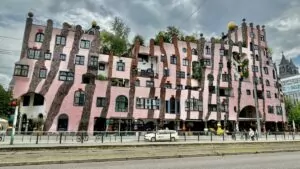
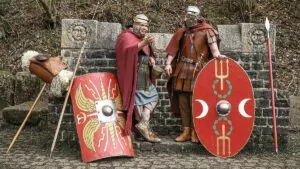
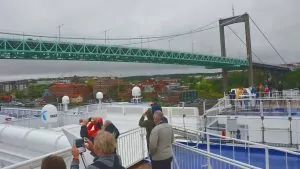
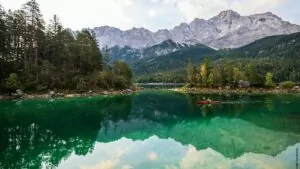
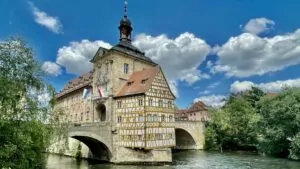
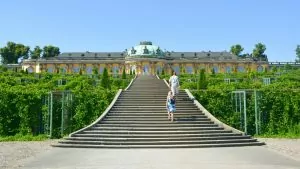
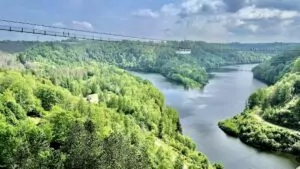
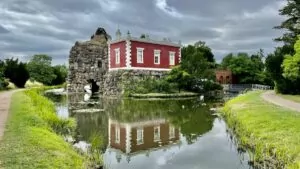
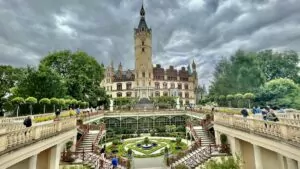
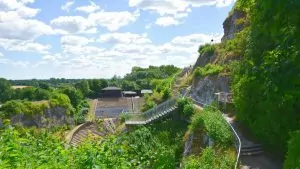
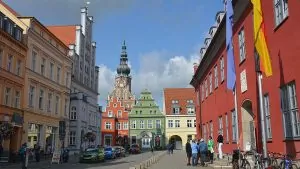
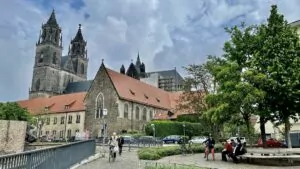
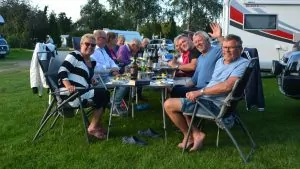
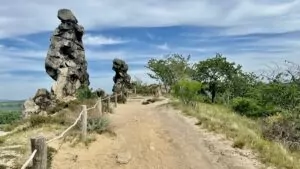
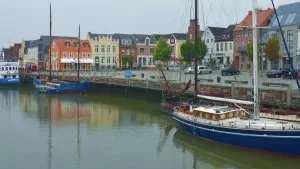
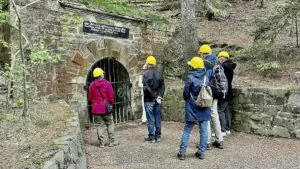
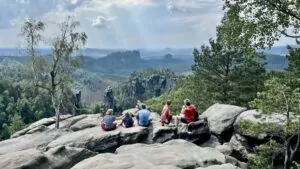
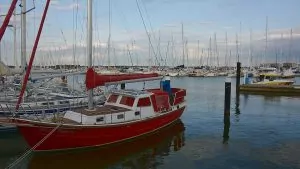
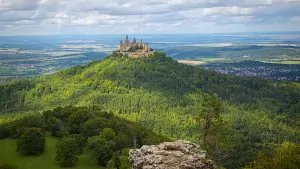
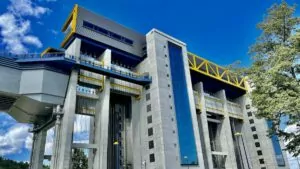
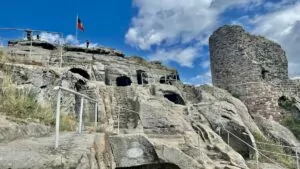
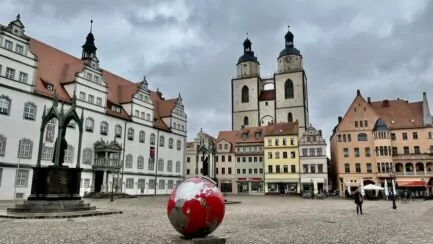
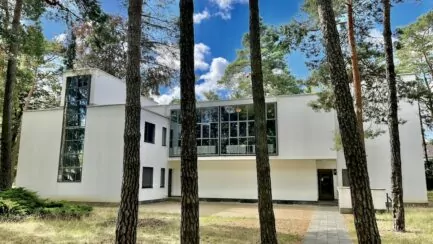
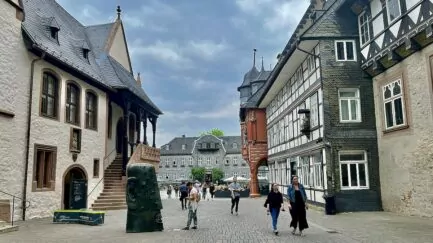
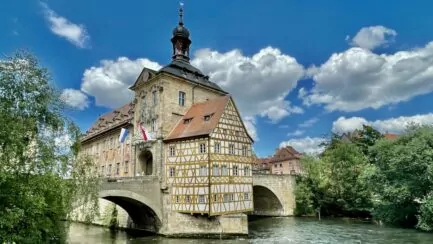
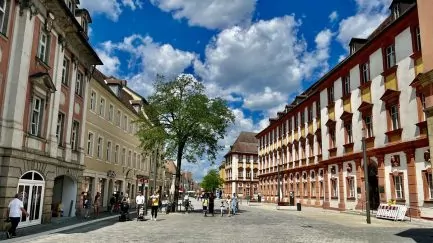
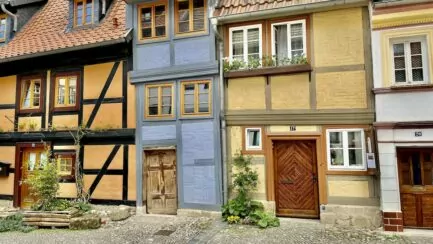



Veiken says:
https://www.veiken.se/?s=Rugen
It's been a while since we've been to Rügen, but we'd love to go back. Already eight years ago. Surely a lot has changed since then!
31 May 2019 - 8:02
Helena says:
Thanks for the link! I will check your post when I have better internet. (Tried now but didn't get the pictures up.) I can also imagine going back, fantastic!
01 June 2019 - 12:05
Mr Nils-Åke Hansson says:
as I have said before, we like Rügen and we are close too. How unfortunate that one of you was involved in the accident.
31 May 2019 - 9:09
Helena says:
Yes, sad about the accident, and at the same time nice that it did not get worse. Understand that you like Rugen, and perfect location for you!
01 June 2019 - 12:06
Lisa says:
It is unfortunate that one of you was hit by a car, but good that there were no injuries. Yes, we have been to Stralsund and also think it is a fantastic city. We did a guided tour with a double decker bus and then we visited the Störterbeker beer shop. The pitch we stood on was very nice with a barbecue hut and was owned by a motorhome company. Every morning they offered freshly baked Brötchen. Have now followed you on your trip and seen how nice you have. However, I think you missed Ahlbeck, Basin and Heringsdorf, which in our opinion are the small gems of the coast. Now have a continued nice Beachcombing Challenge.
31 May 2019 - 9:24
Helena says:
It sounds like you had a good and interesting trip to Stralsund! Thanks for the tips on more places to see! Then we have reason to go back! ??
01 June 2019 - 12:10
Ama de casa says:
Wow, what a drama! Fortunately, there was "only" a little damage to the car in any case.
It's a shame you missed more time in this beautiful city, but it certainly could have been worse.
Have a good day and drive carefully!
31 May 2019 - 9:37
Helena says:
Yes, that's how it is! Unlucky, but still lucky that it didn't get worse!
01 June 2019 - 12:12
Hasde says:
Dramatically, Linda does, but they seem to have their noses above water. Stralsund is nice, but Rugen is better. We have cycled around the island and passed where you live. Take a bike and continue cycling on the island, starting with the small hill after the campsite (do I remember correctly?) Is just so nice and fun things appear here and there. The train was just touristy we thought.
31 May 2019 - 9:50
Helena says:
Yes, it was dramatic for Linda and Pär! Lucky that it didn't get worse. Thanks for all the tips! We will not have time for everything this time, but we will gladly return to Rugen!
01 June 2019 - 17:25
Mrs Gunilla Lundström says:
Nice to read about your adventures - both good and bad - glad no one was hurt.
Too bad you missed Neu-Brandenburg and its fine ring wall. On the Rugen, a visit to Putbus is not wrong. The city was founded by a nobleman Putbus in the early 19th century and has a different architecture the houses are white and the city is also called the "Weisse Stadt".
/Gunilla
31 May 2019 - 11:14
Helena says:
Thanks for the tips! It's hard to fit everything in, but this is an area we can go back to!
01 June 2019 - 17:53
Husis blog says:
Wow, it really happens a lot on this trip. Sorry about the damage to the motorhome, but at the same time lucky that there were no injuries to people.
Nice to recognise some pictures from the nice harbour and city centre of Stralsund.
There are so many nice things on Rügen, the cosy town of Binz and Hitler's old military accommodation with all the history.
31 May 2019 - 11:28
Helena says:
Yes, sad with the house image damage of course, but lucky that nothing worse happened! Glad you recognise yourself! 🙂
01 June 2019 - 17:55
Lena - good for the soul says:
So sad with the accident and missed tours! But nice that it went reasonably well anyway.
Hug Lena
31 May 2019 - 12:17
Helena says:
Lucky it didn't get worse!
01 June 2019 - 17:55
Ditte says:
Completely unfamiliar territory for me but very nice to follow you. And it certainly looks nice. We don't have a car anymore, so there will probably not be a trip here either. There is so much that attracts. But you never know.
It's a shame about the accident, but it's also good that there were no direct injuries.
There's also a lot of history in these parts, which I find interesting.
31 May 2019 - 20:29
Helena says:
Yes very interesting areas, not least the history!
01 June 2019 - 17:56
BP says:
It's a shame about the accident and that you missed the tour, but the main thing is that none of you were hurt and that damage to metal can be repaired.
Stralsund is really a sweet and cosy place. The majestic Town Hall (I guess it is) was incredibly nice as well as the colourful houses.
31 May 2019 - 21:16
Helena says:
Yes very sad with the injury but at the same time nice that it did not get worse! Stralsund is fantastic!
01 June 2019 - 17:57
Christian says:
Fun, rugen is a lovely summer resort, was only there for the day on a cruise, but would love to go back!
31 May 2019 - 21:40
Helena says:
Glad you have been to Rugen! Can certainly be really nice to spend a holiday week there!
01 June 2019 - 17:59
Birgitta says:
We (my husband and I) have been to Rügen several times, most recently in early April this year:-) . I think you missed several interesting places. Sellin with its fantastic sea promenade, Binz with fantastic houses and very nice promenade with its long bridge and cosy restaurants. Not to mention Prora which is a must when visiting Rügen. Hitler's famous dream of a holiday area for the workers. 4 km 6 storey house that never became ready for occupation (peace came in between). Cap Arcona is also worth visiting. All the sites have car parks.
01 June 2019 - 9:03
Helena says:
Glad that you have been so much on Rugen! We did not have much time this time, but are happy to return! Maybe good to have a little left 😉 We actually saw Prora but I did not have time to include it in the post 😉.
01 June 2019 - 18:01
Birgitta Kärreman says:
We (my husband and I) have been to Rügen several times 🙂 Most recently in early May this year. I think you missed several places worth seeing so you have to drive there again.
Sellin with its fine forest promenade right by the Baltic Sea, Binz with its long promenade and long pier, fine white houses and cosy restaurants. Not to mention Prora, Hitler's dream project for the working people. 4 kilometres of 6-storey buildings right on the sandy beach that have been in disrepair since the peace. Now some parts are being renovated and sold as condominiums. Cap Arcona is also worth seeing, all resorts have car parks.
There are also nature reserves and nice little seaside resorts. Give Rügen a second chance!
01 June 2019 - 9:16
Helena says:
Maybe you also saw our other post about Rugen? And absolutely, we really liked beautiful Rugen. Will gladly return! 🙂
01 June 2019 - 18:03